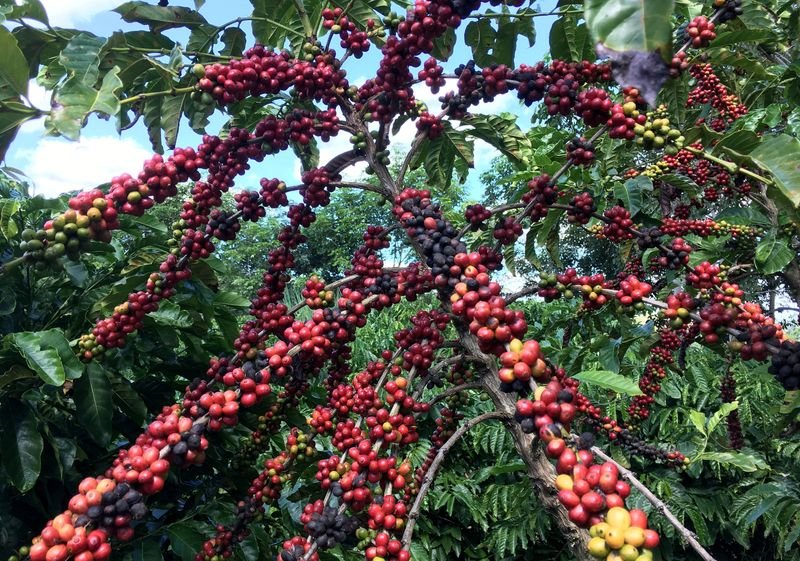Current Trends in Coffee Prices
Coffee prices have experienced notable fluctuations recently, as indicators suggest a shift in market dynamics. A decrease in prices is attributed to new weather forecasts, particularly in Brazil—one of the world’s largest coffee producers—eliminating the threat of frost in key coffee-growing areas.
Factors Influencing Coffee Prices
The coffee market has faced downward pressure over the past several weeks. Recently, arabica prices hit a five-month low, while robusta prices reached a 13-month low. The decline is largely due to anticipated increases in coffee production, coupled with ample supplies in the market, which have contributed to price reductions. Brazil’s ongoing coffee harvest is a significant factor analyzing the current pricing scenario.
Reports from Safras & Mercado revealed that Brazil’s coffee harvest for the 2025/26 season is approximately 35% complete as of mid-June. This marks a slight decline from 37% during the same period last year but aligns with the five-year average. Notably, robusta harvest completion stands at 49%, while arabica harvest completion is at 26%. Adverse weather conditions, including heavy rainfall, have hampered the arabica harvest in certain regions.
Updates from Coffee Cooperatives
Brazil’s largest coffee cooperative, Cooxupe, has reported that its members have completed roughly 24.3% of the coffee harvest as of late June. This cooperative plays a crucial role in Brazil’s coffee production, accounting for a significant portion of the nation’s coffee exports.
Global Coffee Production Insights
Recent forecasts from the USDA’s Foreign Agricultural Service (FAS) indicate a modest increase in coffee production for Brazil, estimated to rise by 0.5% year-over-year to approximately 65 million bags. In contrast, Vietnam, a leading producer of robusta coffee, is projected to see a substantial rise in production by 6.9%, reaching 31 million bags.
Weather Patterns and Their Impact
Lower-than-average rainfall in Brazil has raised concern among market analysts. Data from Somar Meteorologia noted that Minas Gerais—the primary arabica coffee-producing region—experienced no rain during a recent week in June. Such conditions could influence coffee supply dynamics, despite increasing robusta inventories, which recorded a five-week low of 5,126 lots.
In a contrasting trend, arabica coffee inventories monitored by the ICE rose to a four-and-a-half-month high of 892,468 bags before settling slightly lower at 865,898 bags.
Export Trends Affecting Prices
Brazil’s coffee exports have shown a marked decrease, with figures indicating a 36% year-over-year decline in May green coffee exports to 2.8 million bags. This trend may provide some upward support for coffee prices, hinting at a tighter supply in the global market.
Conversely, Vietnam’s coffee production for the 2023/24 season has suffered a dramatic drop, estimated at 20%, leading to a total output of 1.472 million metric tons—the lowest in four years. Reports from Vietnam’s National Statistics Office observed a 1.8% decline in coffee exports during the early months of 2025, further stressing the need for robust market strategies.
Future Projections
Looking ahead, industry projections offer a mixed outlook for coffee prices. The USDA’s biannual report suggested that global coffee production for 2024/25 will rise by 4% year-over-year to reach 174.855 million bags. This growth includes a 1.5% uptick in arabica output and a 7.5% increase in robusta production. However, the anticipated reduction in ending stocks may loom over the market, potentially maintaining pressure on prices.
For the 2025/26 marketing year, Volcafe has forecasted an arabica coffee deficit of 8.5 million bags. This forecast marks a widening gap from the previous year’s deficit and indicates ongoing challenges for coffee supply chains.
In summary, coffee prices are currently influenced by various factors, including weather conditions, harvest progress, and export trends. As the global coffee landscape evolves, stakeholders must remain vigilant and adaptable to the shifts that may affect market dynamics.
